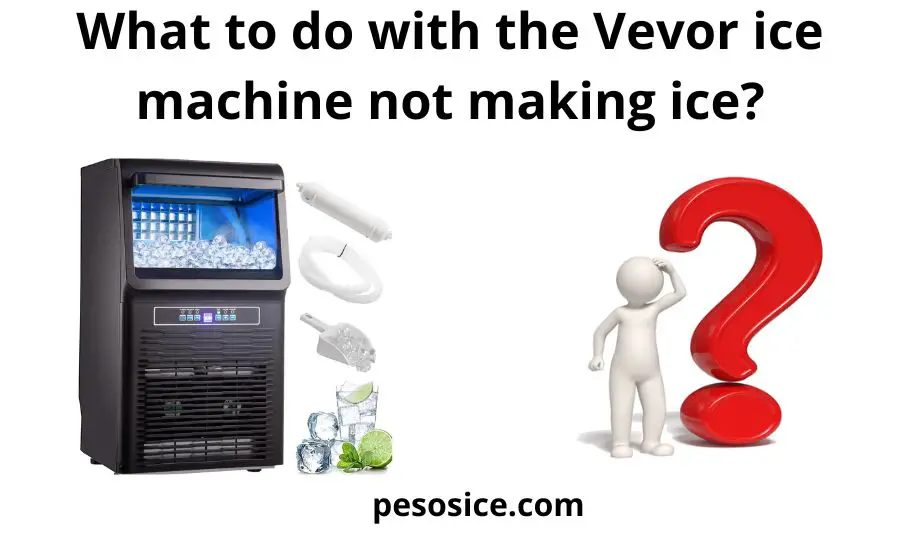
What to do with the Vevor ice machine not making ice? Discovering solutions for a Vevor ice maker not functioning properly is crucial for ensuring its optimal functionality.
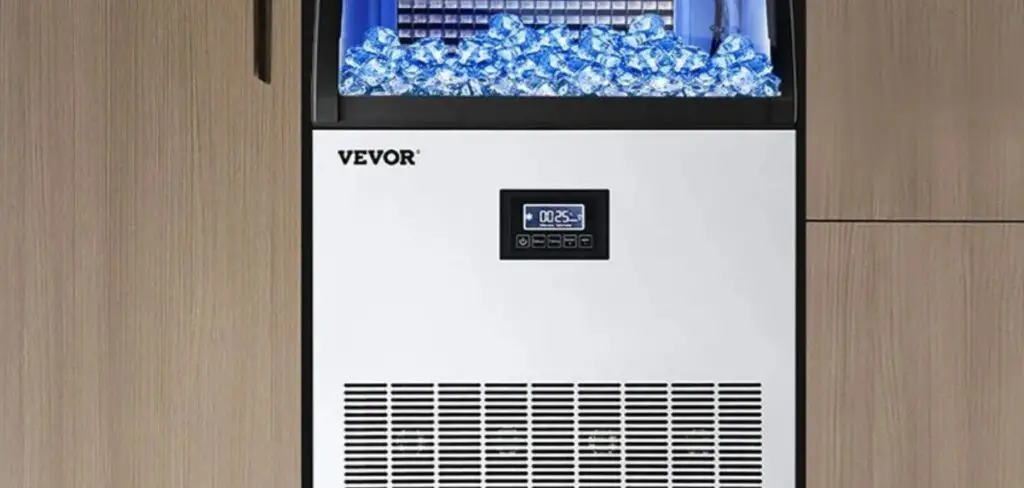
Understanding Vevor ice machines
Delving into the intricate workings and diverse models of Vevor ice machines offers insights into their functionality and unique features.
Components and their roles
The various components within a Vevor ice machine play distinct yet integral roles in the ice-making process.
Compressor
This essential ice maker part compresses the refrigerant, enabling it to flow through the system and starting the chilling process of making ice.
Condenser
It is in charge of releasing heat to turn the refrigerant gas into a liquid condition.
It helps keep the ice maker at the ideal temperature needed for ice formation.
Evaporator
By absorbing heat from the water and enabling it to freeze into ice, it helps the freezing process. In this stage, the coils in the evaporator are crucial.
Water pump
This part of an ice maker controls the amount and distribution of water entering the system, guaranteeing consistent ice production.
Ice tray/ice storage bin
Ice is kept in the ice tray until it’s time to use it.
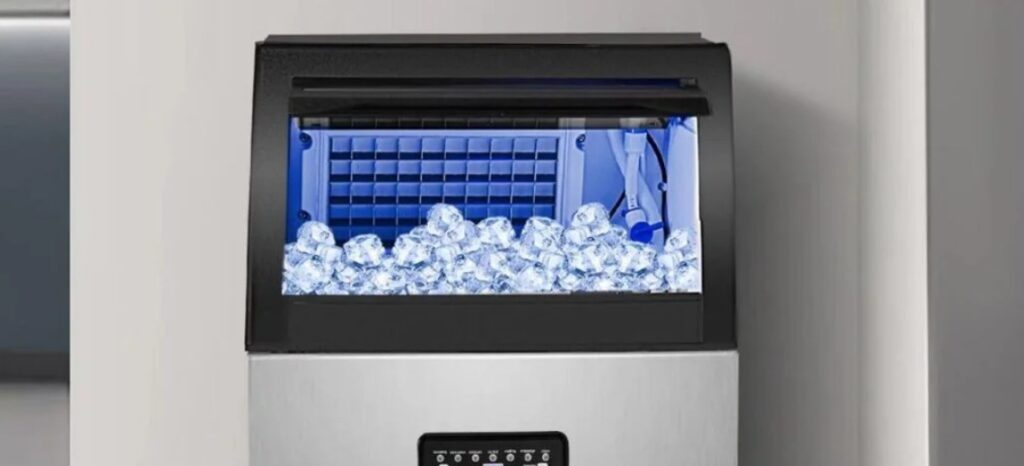
Common ice maker models and variations
Vevor offers a range of ice machines with varying capacities, sizes, and functionalities, tailored to different commercial and residential needs.
Undercounter ice machine
Perfect for small bars, cafes, or residential use, this item is made to fit under counters or in confined locations.
Freestanding ice maker
A freestanding ice maker is a multipurpose appliance that works well in bigger commercial settings like banquet halls, hotels, and restaurants since it may be positioned in a variety of locations.
Commercial ice machine
These heavy-duty models are engineered for high ice production rates, often equipped with larger storage capacities and faster ice-making cycles.
Portable ice maker
A portable ice maker offers a handy method for making ice while on the go.
It is a lightweight, portable appliance designed for travel, outdoor activities, or small gatherings.
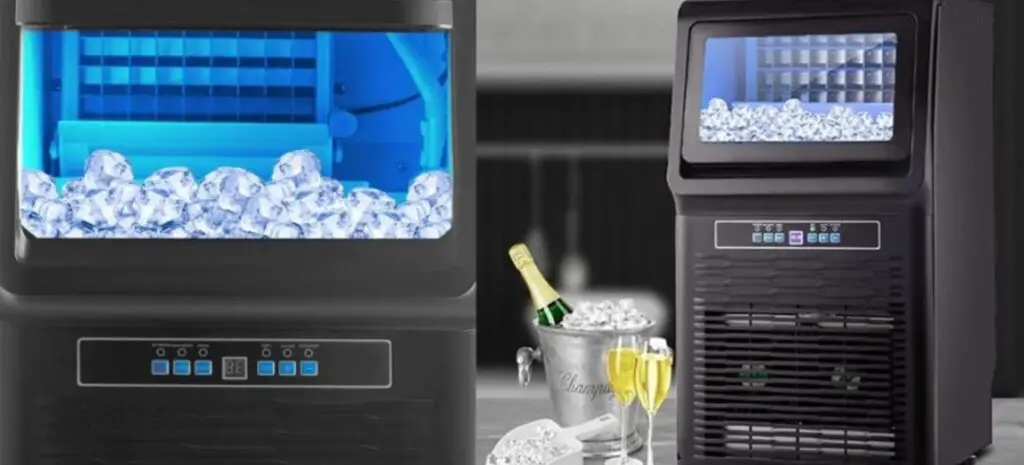
Common issues hindering ice production
Identifying common issues encountered by Vevor ice machines while making ice cubes is essential for efficient troubleshooting and maintenance.
Insufficient water flow within the ice maker
Potential causes:
- Low water pressure or supply: the necessary flow into the ice-making system may be hampered by low water pressure coming from the source or a limited water supply.
- Clogged inlet valves: the water flow may be restricted by the buildup of silt, debris, or mineral deposits in the inlet valves.
- Faulty water pump or sensor: an issue with a water pump or sensor could prevent the machine’s ability to detect or distribute water properly.
A clogged filter or water supply line
Potential causes:
- Accumulation of debris: debris, scale, or mineral deposits can build up over time in the water filter or ice maker water lines, preventing the water flow that is required for producing ice.
- Irregular maintenance: if the ice maker isn’t cleaned or maintained regularly, debris can get trapped in the ice maker water lines or dirty filter, which can lower water flow and reduce ice production.
Faulty or malfunctioning ice maker assembly
Potential causes:
- Mechanical failures: critical components such as the compressor, ice tray, evaporator, or thermostat might experience mechanical failures.
- Electrical issues: malfunctions in electrical components or disruptions in the circuitry can disrupt the process of making ice cubes.
Ice thickness control problems
Potential causes:
- Incorrect settings: incorrect calibration or ice maker settings on the ice thickness control mechanism can result in the production of ice that is too thin or too thick.
- Sensor or control board issues: problems with ice maker sensors or control boards responsible for regulating ice thickness may lead to inaccuracies in ice formation.
Overloading the machine
Potential causes:
- Exceeding capacity: demanding more ice cubes than the capacity of an ice maker allows can overload the system, hindering its ability to produce ice effectively.
- Stress on the system: continuously overloading the Vevor ice maker by expecting it to produce beyond its capability can strain the components.
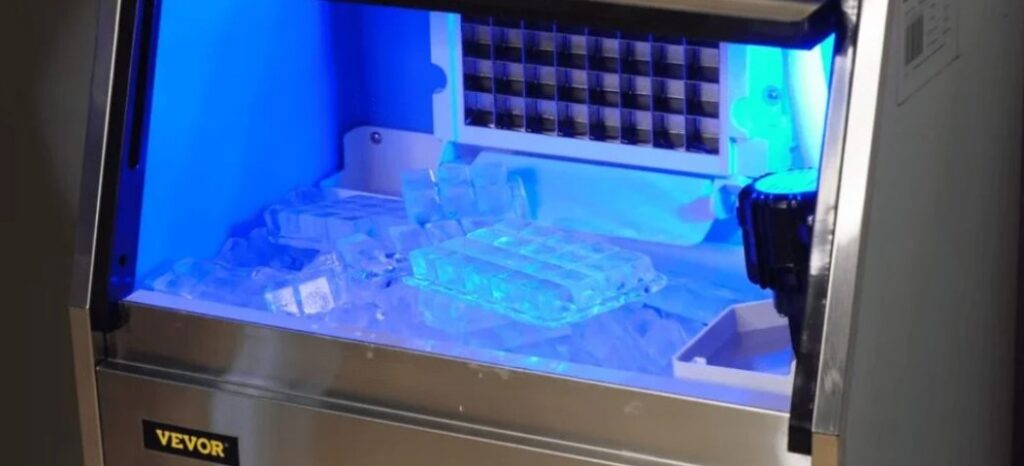
Vevor ice machine troubleshooting guide
Following this Vevor ice machine troubleshooting guide can efficiently diagnose and resolve issues affecting the functionality of your machine not functioning properly.
Checking for water supply issues
- Water source inspection: verify that the water dispenser connected to the Vevor ice machine is turned on and providing sufficient water pressure.
- Check the water inlet valve: inspect the water inlet valve for any clogs, debris, or sediment that might obstruct the flow of water into the ice maker.
- Test the flow: disconnect the water line from the machine and turn on the water supply briefly to check the flow rate. If it’s slow, investigate further for blockages in the line or low water pressure.
- Clean or replace filters: clean or replace any filters in the water line according to the manufacturer’s instructions. Clogged filters can significantly reduce water flow into the ice ice maker.
- Ensure proper installation: confirm that the water line is correctly connected to the inlet valve without any kinks or bends that could impede steady supply.
- Check for leaks: inspect the water line and connections for any leaks that might affect the water supply to the Vevor ice machine.
Inspecting and cleaning filters and water lines
- Filter examination: locate and remove filters in the water line connected to the Vevor ice machine.
- Visual inspection: check for visible debris, particles, or sediment buildup within the filters.
- Deep cleaning: soak filters in a vinegar or mild descaling solution to dissolve mineral deposits. Rinse thoroughly afterward.
- Inspect water lines: examine the water lines for any signs of blockages, kinks, or irregularities that may impede water flow to the Vevor ice machine.
- Cleaning water lines: flush the water lines with a descaling solution or use a pipe brush to remove any accumulated deposits or obstructions.
- Reassemble and test: once cleaned, reinstall filters properly and ensure the water lines are securely connected. Test the flow to verify improvements.
Verifying the functioning of the ice maker assembly
Compressor inspection:
- Try to identify any strange noises, such as rattling or buzzing, as these could be signs of compressor problems.
- Verify that the ice maker compressor is receiving enough cooling; if it isn’t, there may be an issue.
Evaporator examination:
- Examine the evaporator coils for any obvious rust, frost buildup, or damage.
- To ensure effective heat transfer for ice creation, make sure the ice maker evaporator is clean and clear of debris.
Condenser assessment:
- To allow for optimal heat dissipation, remove any clutter or impediments from the condenser’s surroundings.
- To ensure the best possible refrigerant cooling, make sure the ice maker condenser coils are clear of obstructions and clean.
Sensor testing:
- Verify the calibration and correct operation of any temperature sensors or control boards.
- Make sure the sensors are positioned correctly and aren’t blocked, which could interfere with their capacity to control the ice production.
Electrical component check:
- Check for signs of damage or loose connections on control panels, wiring, and electrical connections.
- To verify the voltage, continuity, and performance of electrical components, use the proper tools.
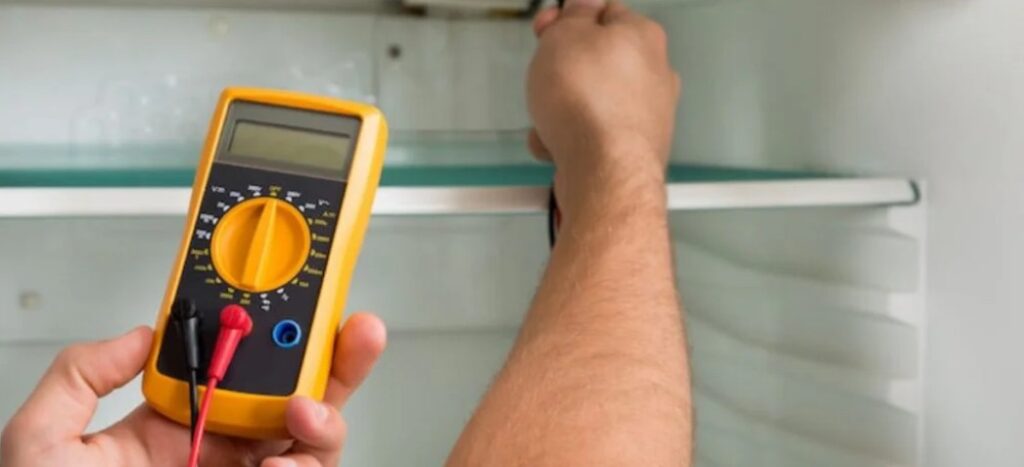
Adjusting settings for producing ice correctly
Ice thickness control:
- Locate the ice thickness adjustment mechanism on the ice maker.
- To determine the ideal thickness of ice cubes, according to the manufacturer’s instructions. Carefully adjust it for the best effects.
Temperature settings:
- Access the temperature settings, which are usually found on the control panel.
- Adjust the temperature to within the suggested range (often 0°F to 5°F) for making ice.
Cycle duration adjustment:
- If the machine has a customization feature, consult the handbook to change the cycle length for producing ice.
- The length of the ice-making cycle should be balanced to meet demand without taxing the machine too much.
- If necessary, calibrate sensors or control boards to make sure they reliably identify the production of ice and manage the freezing process.
Observation and testing:
- After making adjustments, keep an eye on the machine to see the quality and rate of ice production.
- Try out several configurations to find the most effective mix for the best ice production.
- Keep track of any modifications and how they affect the process of making ice. Save documentation for reference or troubleshooting in the future.
Maintenance tips to prevent future issues
To ensure prolonged functionality, implementing a structured maintenance routine is crucial for preventing potential issues with Vevor ice makers.
Regular maintenance and cleaning schedule
Scheduled cleaning: by the manufacturer’s recommendations, set up a regular cleaning plan. Frequent cleaning stops mold, scale, and dirt from building up.
Cleaning procedures: pay attention to the cleaning instructions provided for a variety of parts, such as water lines, evaporator coils, and filters.
Use vetted cleaning agents to preserve functionality and hygienic conditions.
Sanitization: to stop bacterial growth and preserve the quality of the ice for consumption, make sure the ice-making facility is well-cleaned.
Using clean water and appropriate filters
Quality water supply: to avoid impurities harming the quality of the ice or clogging its components, use drinkable, clean water.
Filter maintenance: to guarantee effective filtering and keep debris and mineral deposits out of the ice-making system, clean or replace filters regularly.
Water quality testing: make sure the water satisfies the requirements suggested for making ice by conducting routine tests.
Professional servicing
Scheduled professional maintenance: even if the machine seems to be operating properly, think about getting it serviced professionally regularly. In-depth checks can be carried out by skilled professionals.
Expert troubleshooting: consult a professional if you’re having ongoing issues or dealing with complicated challenges.
Skilled technicians can accurately identify and address complex issues.
Compliance with manufacturer guidelines: observe the servicing, repairs, and part replacement advice provided by the manufacturer.
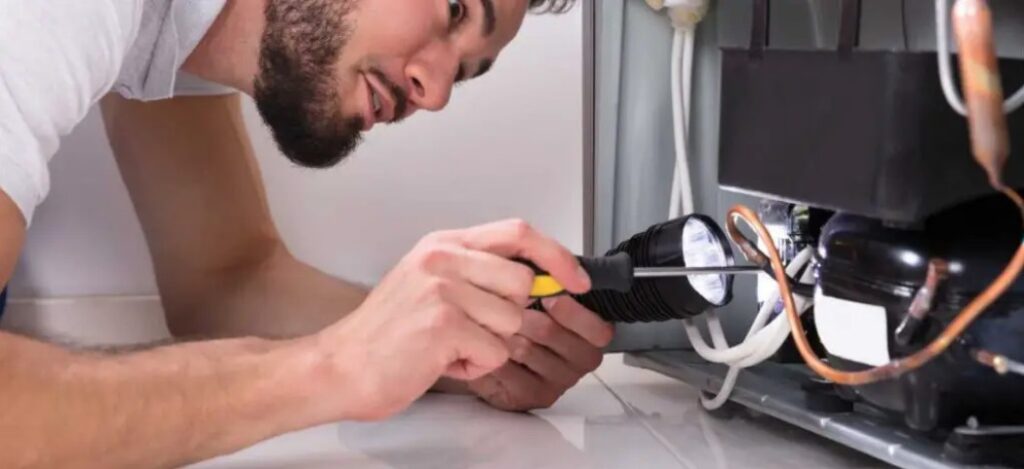
Conclusion
By implementing proactive maintenance and troubleshooting practices, users can ensure consistent functionality and a prolonged lifespan of their Vevor ice machines.
FAQ
Why is my ice machine running but not making ice?
Possible reasons include insufficient water supply, clogged water filter, malfunctioning components (like an ice tray, water inlet valve, or sensors), or incorrect settings.
How do I reset my ice maker?
The two most common ways to reset an ice maker are to find the reset button on the appliance or to unplug it for a short while before plugging it back in.
Why is my Vevor ice machine not making ice fast enough?
Factors such as water supply and water inlet valve issues, a clogged water filter, improper settings, or overloading might contribute to slow ice production.
How do you reset a commercial ice machine?
Commercial ice machines typically feature a reset button or instructions found in the handbook. Typical techniques include holding down the reset button or turning the computer off for a predetermined amount of time before turning it back on.
